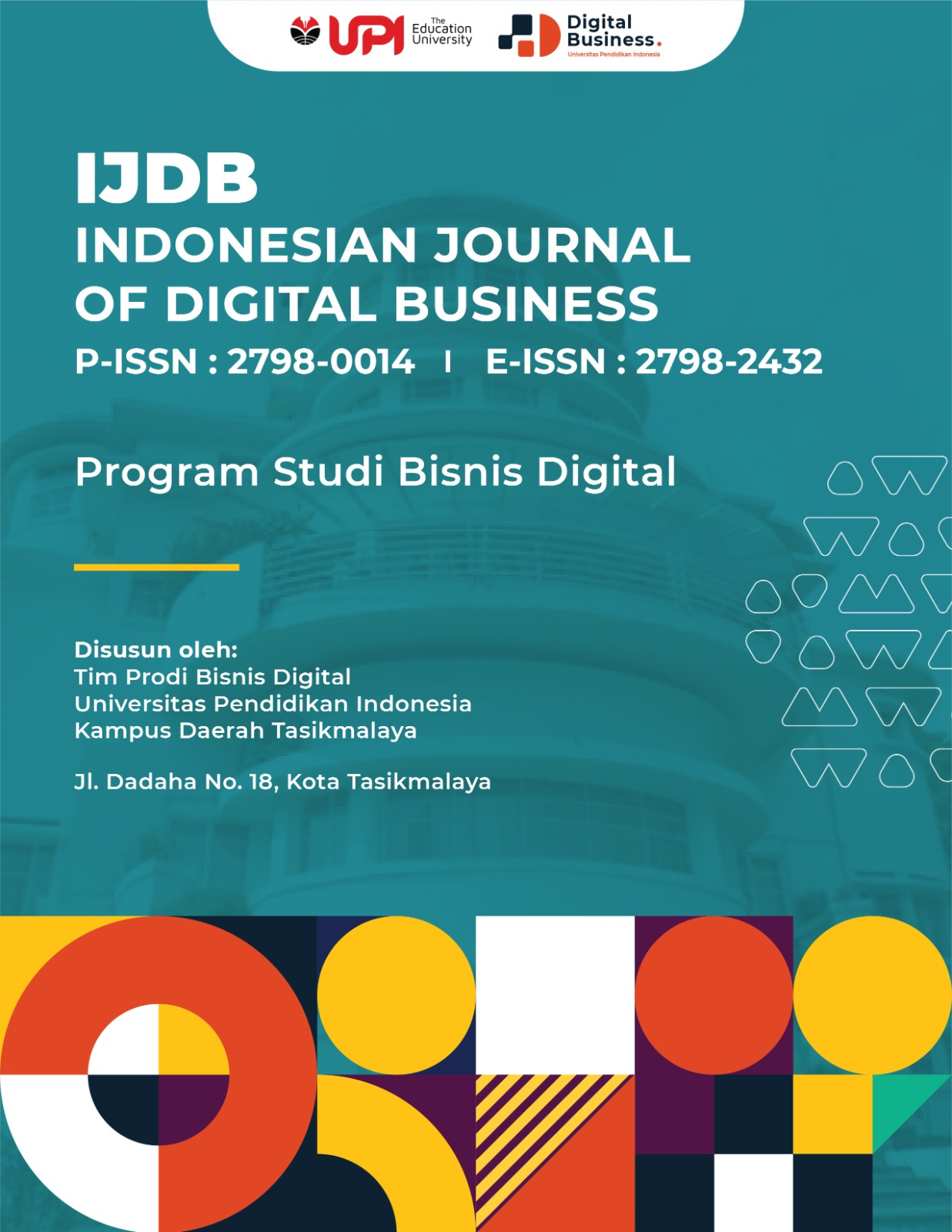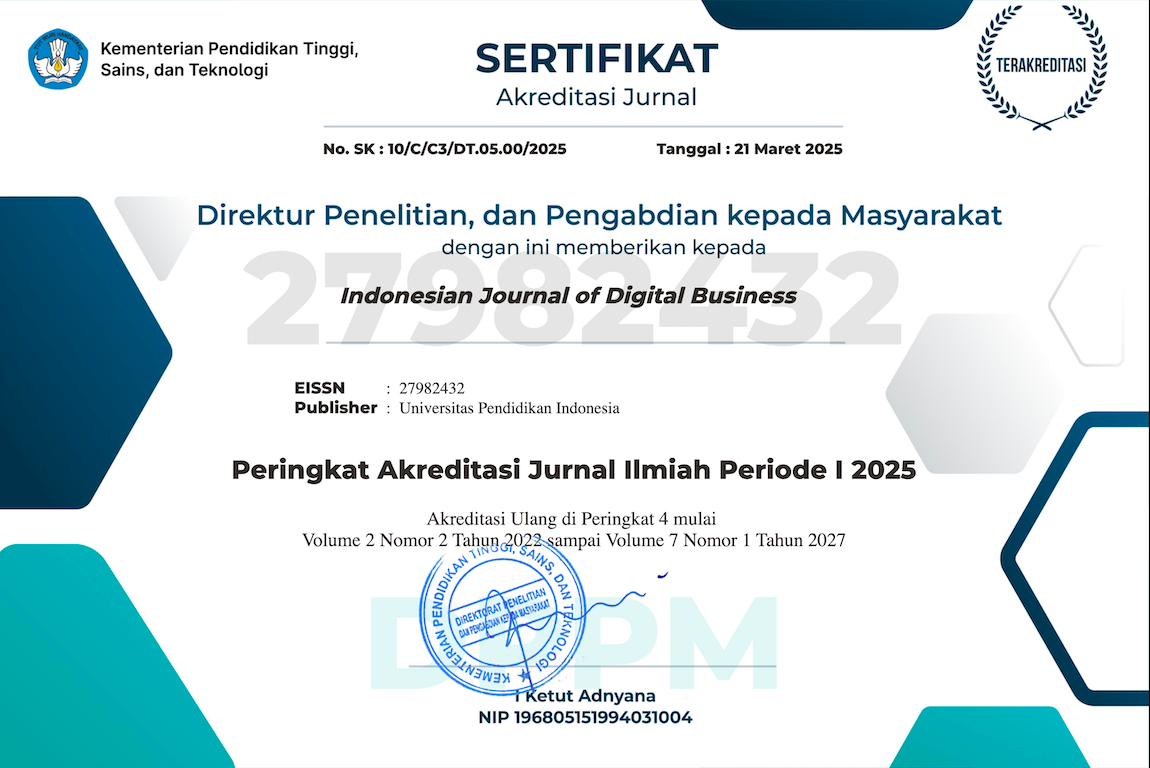Designing a Web-Based Midwifery Dashboard with Pureshare Approach and Drill-Down Features
Abstract
Health-related concerns remain a central focus in public policy, with maternal and child health identified as a critical priority. Midwives play a vital role as frontline providers of maternal healthcare services, and their impact can be significantly enhanced through the integration of technological solutions. However, continued reliance on manual data collection methods hampers the timely availability of essential information, thereby limiting the ability to make prompt and informed decisions. This research aims to support healthcare executives in making timely, evidence-based clinical decisions through the implementation of an executive dashboard system. The dashboard employs a drill-down approach to facilitate detailed data analysis and enhance information accessibility. Development of the dashboard is guided by the Pureshare method, which comprises five key stages: (1) planning and design, (2) system and data evaluation, (3) prototype design, (4) prototype refinement, and (5) final release. The findings of this study resulted in the design of five primary dashboard menus based on midwifery service Key Performance Indicators (KPIs). These menus include: the main executive dashboard, community participation in midwifery services, contraceptive usage trends, pregnancy services, childbirth services, and immunization services—each designed to provide comprehensive insights into the performance and quality of midwifery care.
Keywords
Full Text:
PDFReferences
Baskett, L., LeRouge, C., & Tremblay, M. C. (2008). Using the dashboard technology properly. Health Prog. 89, 16–23 (2008). Health Prog, 16–28.
Bimaniar, I. M., Mawarni, A., Agushybana, F., & Dharmawan, Y. (2018). Pengaruh Persepsi Kemudahan Penggunaan Dan Persepsi Kemanfaatan Dengan Niat Untuk Menggunakan Sistem Informasi Manajemen Surveillance Kesehatan Ibu Dan Anak. Jurnal Kesehatan Masyarakat (e-Journal), 6(5), 209–215. https://doi.org/https://doi.org/10.14710/jkm.v6i5.22010
Fatoni. (2019). Kerangka Kerja Sistem Informasi Eksekutif Perguruan Tinggi. Jurnal Teknologi Informasi Dan Ilmu Komputer, 6.
Ghazisaeidi, M., Safdari, R., Torabi, M., Mirzaee, M., Farzi, J., & Goodini, A. (2015). Development of Performance Dashboards in Healthcare Sector: Key Practical Issues. Acta Informatica Medica, 23(5), 317. https://doi.org/10.5455/aim.2015.23.317-321
Gordon, J., & Richardson, E. (2013). Continuous Improvement in the Management of Hospital Wards: The Use of Operational Dashboards. Int. J. Manag. 30, 414–417 (2013). International Journal of Management.
Gumilang, S. F. S., & Sutari, W. (2018). Sebuah Usulan Generic Model Dashboard Aplikasi Kesehatan Pada Pemerintah Daerah Tingkat II di Indonesia. Konferensi Nasional Sistem Informasi 2018.
Kusnawi. (2011). Tinjauan Umum Metode Pendekatan Dashboard pada Proses Business Inteligence. Data Manajemen Dan Teknologi Informasi, 12(2), 43–48.
Leod, M., Jr, R., Schell, & P, G. (2008). Sistem Informasi Manajemen Edisi 10. Penerbit Salemba Empat.
Martunus, M., Agushybana, F., & Nugraheni, S. A. (2019). Evaluasi Penerimaan Sistem Informasi Pelayanan Kesehatan Ibu Dengan Metode Tam Di Dinas Kesehatan Kabupaten Bungo. Jurnal Manajemen Kesehatan Indonesia, 7(3), 212–216. https://doi.org/10.14710/jmki.7.3.2019.212-216
Maulana, S., Pudjiantoro, T. H., & Santikarama, I. (2018). Sistem Informasi Eksekutif Dinas Kesehatan Kabupaten Bandung Barat. Prosiding SNST Ke-9 Tahun 2018, 1, 267–272.
Miftasari, C. A. (2011). Pengembangan Sistem Informasi Eksekutif Menggunakan Teknologi Web Service (Studi Kasus di Fakultas Saintek UIN Sunan Kalijaga). UIN Sunan Kalijaga.
Pestana, M., Pereira, R., & Moro, S. (2018). Pestana, M., Pereira, R., & Moro, S. (2018). A productivity dashboard for hospitals: an empirical study. In Information Systems: Research, Development, Applications, Education: 11th SIGSAND/PLAIS EuroSymposium 2018, Gdansk, Poland, September 20, 2018, Proceedings 11 (pp. 184-199). Education: 11th SIGSAND/PLAIS EuroSymposium 2018, Gdansk, Poland, September 20, 2018, 184–199.
Pestana, M., Pereira, R., & Moro, S. (2020). Improving Health Care Management in Hospitals Through a Productivity Dashboard. Journal of Medical Systems, 44(4). https://doi.org/10.1007/s10916-020-01546-1
Prasetyawati, A. E. (2019). Kesehatan Ibu dan Anak (KIA) dalam Millenium Development Goals (MDGs). Nuhu Medika.
Pusat Kebijakan Kesehatan Global Dan Teknologi Kesehatan Badan Kebijakan Pembangunan Kesehatan Republik Indonesia. (2022). Rencana Aksi Kegiatan Tahun 2022 - 2024 Pusat Kebijakan Kesehatan Global Dan Teknologi Kesehatan Badan Kebijakan Pembangunan Kesehatan Republik Indonesia.
Ridwan Pranata. (2021). Pengembangan Dashboard Sistem Informasi Rumah Sakit dengan Metode Pureshare. Universitas Islam Indonesia. https://dspace.uii.ac.id/handle/123456789/34172
Sumihar, Y. P., & Wijaya, C. P. (n.d.). Membangun Aplikasi Menggunakan Framework Kohana (Studi Kasus Puskesmas Kalasan). 44–54.
Sutisna, M., Rinaldi, A., Wijayanegara, H., Garna, H., Herawati, Y., Nurlatifah, T., & Cherawaty, A. (2024). The Practicality, Efficiency, Positive Impact and Effectiveness of the “Midwifery Manager” Management Information System in Improving the Quality of Midwifery Services at The Midwifery’s Independent Practice Place Bandung. Journal of Scientific Health, 368–381. https://doi.org/10.56943/jsh.v3i3.610
Walker, D. S., Visger, J. M., & Levi, A. (2008). Midwifery Data Collection: Options and Opportunities. Journal of Midwifery & Women’s Health, 53(5), 421–429. https://doi.org/10.1016/j.jmwh.2008.04.002
Weiner, J. P. F. B. V. P. T. M. P. (2015). Integrating Strategic and Operational Decision-Making Using Data-Driven Dashboards: The Case of St. Joseph Mercy Oakland Hospital. Journal of Healthcare Management, 60(5), 319–330.
Yunus, W., Desanti, R. I., & Wella, W. (2020). Data Visualization and Sales Prediction of PD. Asia Agung (Ajinomoto). International Journal of New Media Technology.
DOI: https://doi.org/10.17509/ijdb.v5i1.83236
Refbacks
- There are currently no refbacks.
Copyright (c) 2025 Universitas Pendidikan Indonesia (UPI)

This work is licensed under a Creative Commons Attribution-ShareAlike 4.0 International License.
Indonesian Journal of Digital Business is published by Universitas Pendidikan Indonesia (UPI)
and managed by Department of Digital Business
Jl. Dr. Setiabudi No.229, Kota Bandung, Indonesia - 40154
View My Stats





1.png)